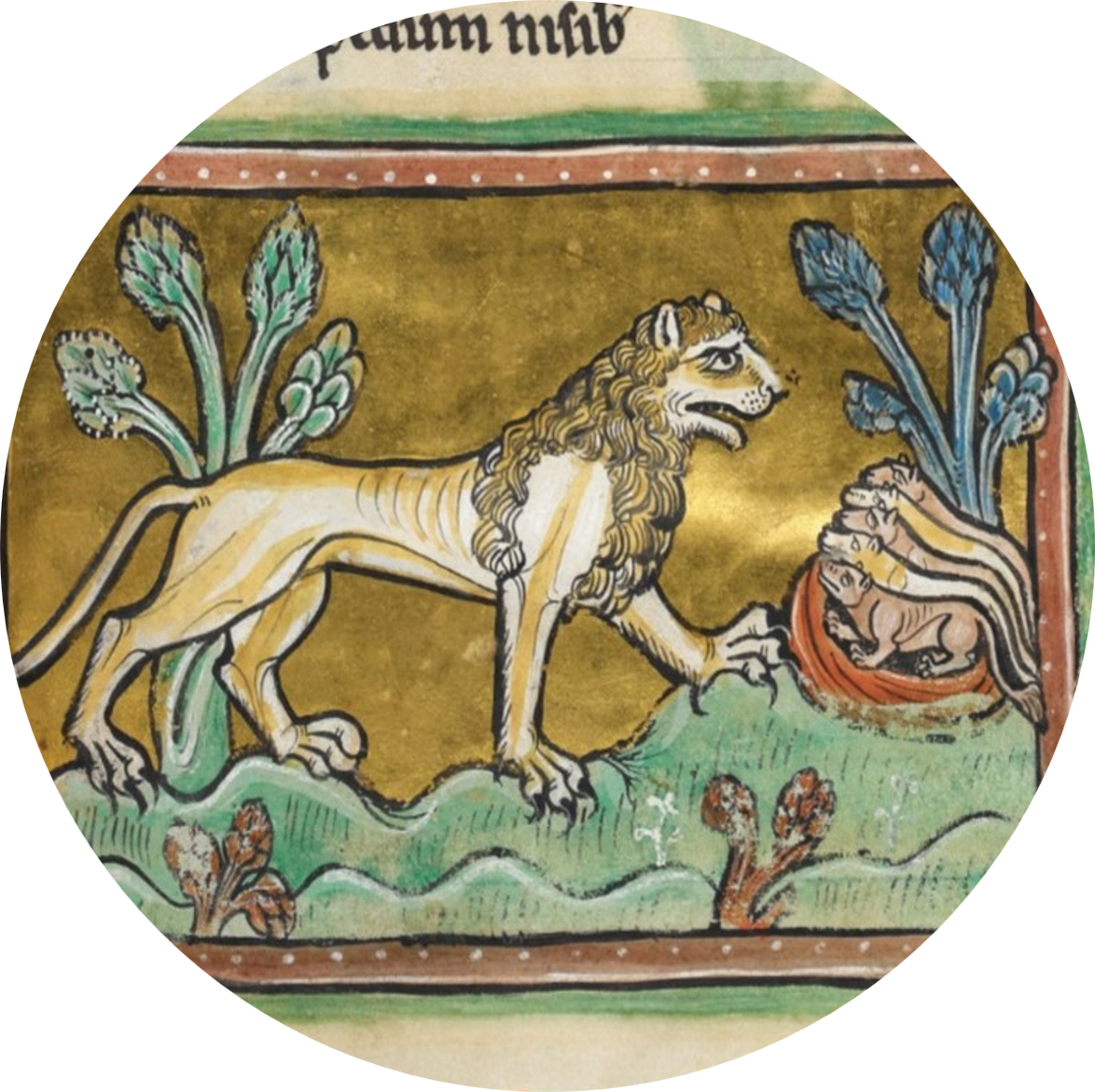The Rochester Bestiary, c.1230
/
Bestiaries, or ‘Books of beasts’, provide an account of the characteristics and habits of a variety of animals, both real and fantastical, together with associated allegorical and moral lessons. This work is one of a number of lavishly illustrated bestiaries produced in England during the the late twelfth to mid-thirteenth centuries, comprising 55 framed illuminated miniatures in colours and gold, at the end of each passage of text describing the animal.
Exploring the Bestiary is about discovering Kent and the wider world’s shared ecological heritage ranging from wild and fabled creatures to farm animals and domestic pets.
Bestiary (‘book of beasts’)
Dr Diane Heath of the Medieval Animals Project reveals the history of the medieval bestiary, or book of beasts.
Here the folios of the Bestiary have been reillustrated by Heritage Officer Jacob Scott with text-to-image generation, both to further bring to life these stories and sometimes to fill in the blanks where the illustrator left off.
Wild beasts (ferae bestia)
The Rochester Bestiary preface records that wild beasts are so named because possess their natural freedom and act with free will and desire. The bestiary also includes many mythical creatures. It concludes with a text on Adam naming animals.
Beasts of burden (bestia onus)
Entries largely on domesticated animals follow, although concluding with a confused series of the mole, laurel tree, hedgehog and ant.
Birds (aves)
An introduction opens the next section of the Rochester Bestiary almost exclusively on birds, although with two appended entries on the ape and peridexion tree. The section also includes the legendary phoenix, caladrius and hercinia.
Snakes (serpentes)
The Rochester Bestiary next features an introduction to a section on ‘snakes’, or what we would today group as reptiles, and includes many legendary types of dragon. Sadly this and the following sections were left unillustrated, although spaces were left by the original scribe.
Insects and worms (vermis)
The Rochester Bestiary includes an introduction and sections on various insects, or as it groups them vermis (‘worms’).
Fish (pisces)
The Rochester Bestiary includes a separate section with an introduction and sections on various beasts of the sea.
Trees (arbores)
In addition to the mythical peridexion tree, the Rochester Bestiary includes a section on other types of trees. Many of the entries relate to their purported medicinal properties.
Humans (homines)
A section on the human body and various body parts follows including descriptions of the senses, body parts and organs, offering a fascinating insight into medieval conceptions of the body and medicine which had evolved little from the ancient world.
Stones (lapis)
The final Latin entry in the manuscript opens the Rochester Lapidary (‘Book of Stones’), otherwise recorded in Old French. Transcription and translation is in progress.
Find out more about green heritage at Rochester Cathedral.
Contributors
With much thanks for the previous translations and interpretation of other medieval bestiaries, including Richard Barber (MS Bodley 764) and Aberdeen University (MS 24).
A project to transcribe and translations the Rochester Bestiary is being undertaken Chapter Library volunteers under review by our Textus 900 contributors.












